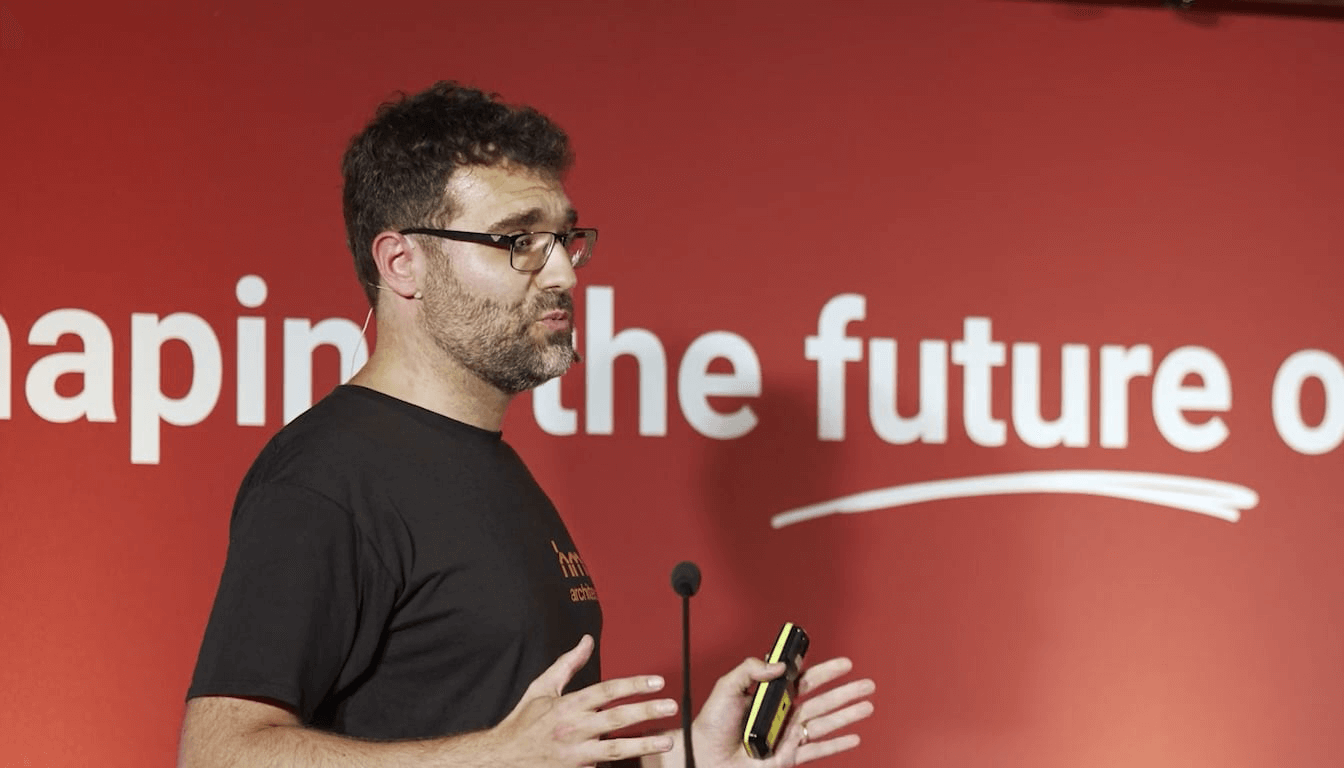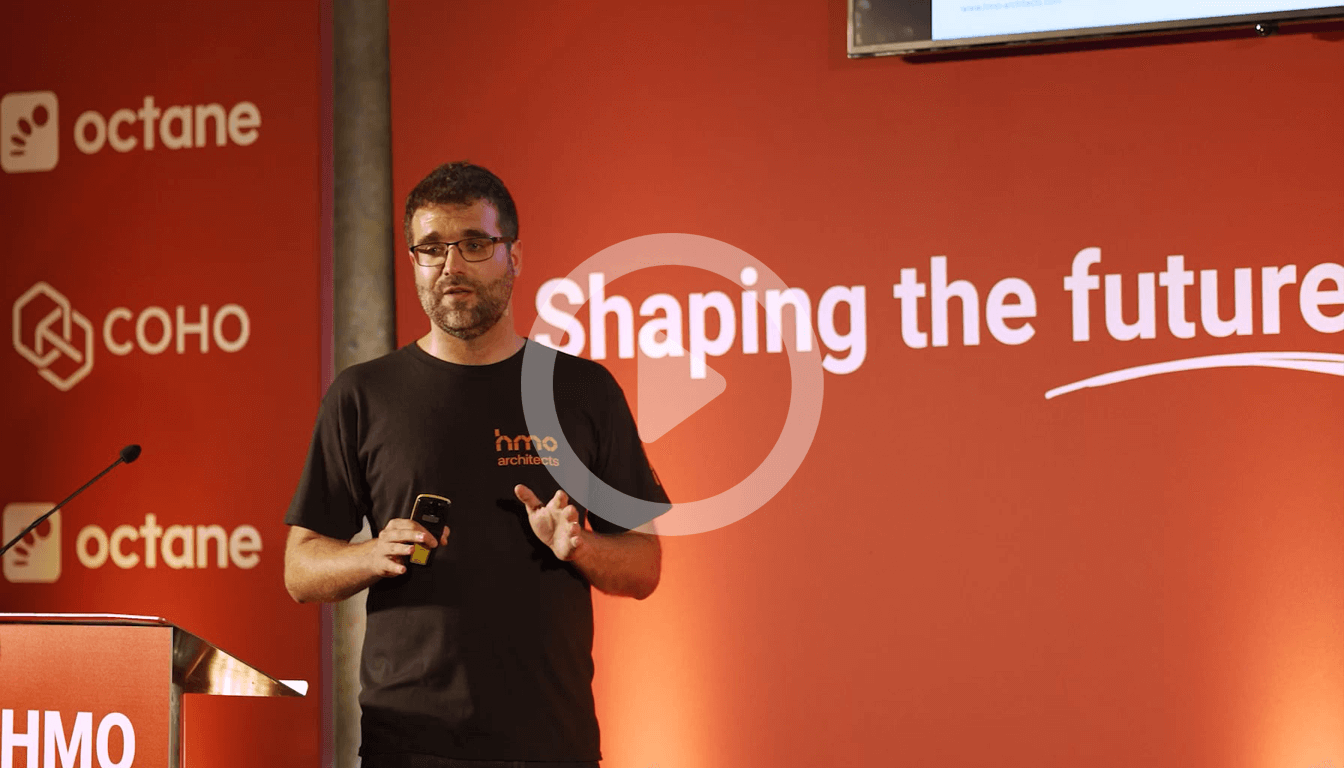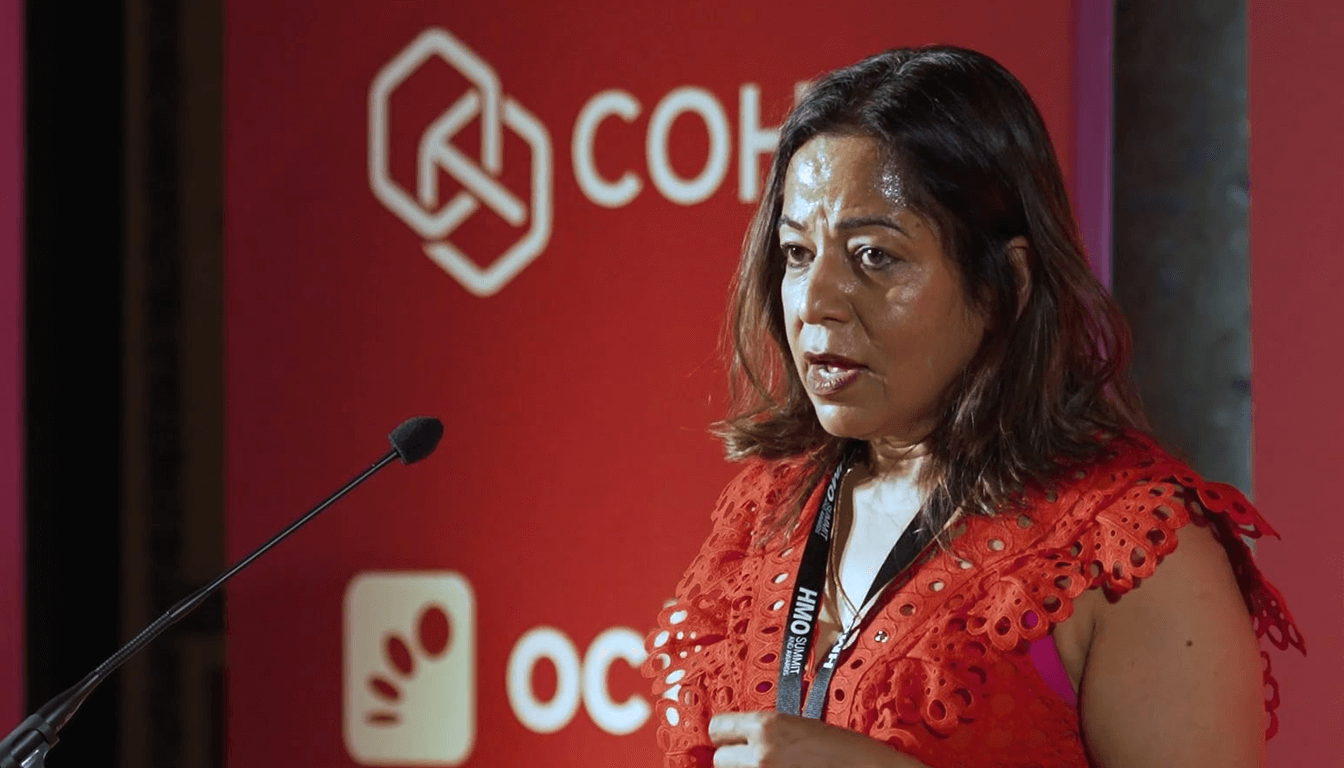When Giovanni Patania took the stage at the HMO Summit he did what great architects do: he translated messy, regulatory and financial realities into reproducible design and planning choices that actually move margin. This talk wasn’t about pretty renderings alone. It was a practitioner’s tour through the nitty-gritty of making HMOs work today,from the three “legs” of compliance you cannot ignore, through clever ways to use permitted development and Class E conversions, to the real interior decisions that make a tenant stay three years instead of three months.
The market context: why we still invest in HMOs,and why it’s harder today
Giovanni reminded the room that 2017 felt easy. Construction costs were lower, Article 4 was less pervasive, and squeezing bedspaces into terraces felt straightforward. Fast forward to 2025 and everything has changed: construction inflation, tougher regulation, more Article 4 areas, and more sophisticated buyers. That makes HMOs both riskier to execute and, if done right, more valuable: done well they remain one of the highest cash-flowing strategies because they concentrate income in a single asset and, when packaged cleverly, attract premium buyers later (portfolios and limited companies are in demand).
The practical implication is simple: the margin still exists, but you have to earn it. That means better feasibility work, smarter planning strategies, and design choices that support longer tenancies and minimal voids. Giovanni’s firm has consulted on thousands of HMO projects; the patterns he described are not theoretical,they’re battle-tested.
The “holy table” of HMO compliance: planning, building regs, licensing
At the heart of Giovanni’s presentation was the metaphor every investor needs tattooed on their due diligence checklist: three legs hold up the HMO table,planning, building regulations, and licensing. Get one of those wrong and the whole table collapses.
Planning is the public face: conversions, extensions, PD considerations, and the local council’s appetite. Building regulations are the technical backbone: means of escape, fire safety, structural works, insulation and services. Licensing is the operating permission from the local authority and can have its own spatial and management conditions. Crucially, these are separate silos that now speak to each other in multiple councils. Just because you can secure a licence doesn’t mean the planning officer won’t later object to the way floors were subdivided; likewise, building regs compliance does not automatically buy you planning forgiveness.
For practical underwrites, this means you must model three outcomes (optimistic, neutral, cautious) across all three legs and budget contingency for the slowest and most expensive path. If your spreadsheet assumes quick planning and zero costly building-reg fixes, you’re exposing the deal to execution risk.
Design that drives tenancy length: brand, ergonomics, and storage
Giovanni stressed that interior design is directly tied to retention. A property that looks “lived in” by tenants who feel proud to live there will run with fewer voids and lower marketing churn. He recommended starting every scheme with a clear visual identity,a mood board that drives finishes, furniture choices and supplier relationships,and then making repeatable templates (a spec list) that let you scale.
Two seemingly small but powerful design levers he highlighted were storage and ergonomics. Built-in under-bed storage, adequate wardrobe/cupboard space, a desk and reading lights are not indulgences in a professional HMO; they are retention tools. Similarly, biophilic touches and considered artwork create an emotional attachment that encourages tenants to stay longer. The outcome is measurable: better referrals, waiting lists and lower turnover.
Giovanni also reminded investors to design for how tenants will actually use spaces: kitchens and living rooms need to work for the number of occupants you plan, and common areas must be robust (furniture, flooring, durable pendant lighting). Spend on the right items,good sofas that survive heavy use, easily serviced white paint in corridors for quick touch-ups,and avoid false economies that create recurring capex.
Space standards: the numbers that stop problems later
One of the most practical parts of the talk was Giovanni’s space guidance. He exploded the spreadsheet myth that “any bedspace counts” and pushed for realistic minimums based on liveability and council tolerance:
- Bedrooms sized at 9–10 sqm are the pragmatic “sweet spot.” Giovanni advised caution with the 6.5 sqm rooms that sometimes appear on spreadsheets: they may be tolerable for short-term, premium central London lets, but in most councils and most areas they are poor long-term homes and will inhibit retention.
- Bathrooms: target 1.8 sqm as a minimum for a proper bathroom. Wet rooms (around 1.4 sqm) are a last-resort technique where space constrains you, but they bring higher cost and leak risk unless executed perfectly.
- Avoid assuming kitchen provision is a “one-size-fits-all”,the difference between a kitchenette, a full kitchen, and a non-fixed cooking point carries planning consequences.
These figures aren’t bureaucratic pedantry. They matter because planning officers and inspectors judge the viability and habitability of HMOs by these measures. Designing with sensible space standards reduces the likelihood of enforcement and increases tenant comfort,both of which protect income.
Kitchenettes, en-suites and the planning tightrope
Giovanni gave practical and hard-earned counsel on kitchen provision. Full kitchens inside bedspaces are risky: where councils view them as self-contained units, you’re exposed to enforcement and potential decommissioning of equipment. He described three pragmatic tiers:
- Full kitchen inside the room,highest rent uplift but also highest planning scrutiny and removal risk. Use only where you have explicit planning permission or in markets where officers accept this as part of a defined HMO typology.
- Freestanding kitchenette (the sweet spot),simple, removable cookers and plug-in appliances that can be demonstrated as non-fixed and therefore easier to defend in planning terms. This approach often delivers most of the rent uplift with less regulatory exposure.
- No in-room cooking (communal kitchen),simplest planning profile and lower per-room rent, but easier for long-term compliance and lower capex risk.
Giovanni’s blunt advice: treat kitchen provision as part of your planning strategy rather than an afterthought. If you choose the kitchenette path, consider not showing it in the planning application where possible,instead add it later as a non-fixed fit-out (recognising this is council-dependent and you must verify locally).
Permitted development, Class E strategy and clever phasing
One of Giovanni’s most powerful strategic suggestions was the phased Class E → flats → HMO route he used in Birmingham. The mechanics are elegant and practical if you understand the rules: buy a Class E (office) building, use prior approval and PD rights to convert to flats where that route is permitted, then convert the flats into HMOs (often via PD rights or under an HMO conversion route). This can dramatically change the economics: he described an example where a building bought for around £800k,converted with relatively modest capex,later valued at c. £2.6m with monthly rents rising commensurately.
This approach is not magic, though. It requires careful site selection, absolute clarity on prior-approval eligibility, expert architectural and planning input, and precise sequencing. The lesson: if you can use PD and prior-approval levers you reduce planning friction and sometimes bypass the full major-application grind,but only after thorough due diligence.
Case studies,real numbers that show how design + planning add value
Giovanni shared three case studies that make the argument concrete:
- Portsmouth, seven-bed HMO: refurbishment c. £250k; value uplift from ~£350k to ~£750k; rent increased from c. £900 pcm to c. £5,500 pcm; annualised rent c. £66k; delivery in ~12 months. Outcome: design and fit-out converted a modest terrace into a sui generis HMO that commands professional rent levels and durable tenancies.
- Acton, London,nine-bed: heavy refurbishment (~£850k) and complex planning/phasing; purchase indicated at ~£800k and post-project value ~£2.2m; rent uplift from c. £2,500 pcm to ~£11,200 pcm (annualised ~£134k). This was a marathon: phased planning (extensions, dormer, then sui generis HMO app) required patience and capital but produced outsized uplift.
- Birmingham, Class E → flats → 35-bed HMO: refurbishment ~£900k; value growth from ~£800k to ~£2.6m; rent uplift from ~£5,000 pcm to ~£18,000 pcm; annualised rental c. £216k; timeline c. 22 months. This is the archetype of creative PD/Class E strategy delivering scale and margin.
Those numbers are instructive not because they are replicable everywhere but because they show the shape of gains when design, planning phasing and a clear tenant product align. Importantly, every case required specialist design input, rigorous specification lists, and patience for planning.
Execution realities: timelines, cashflow and capex inflation
Giovanni’s lived advice was a warning to those who think HMOs are “quick flips.” The Acton project took around two years from start to finish with long planning phases; the Portsmouth job was quicker but still required coherent brand and fit-out thinking; the Birmingham conversion required detailed prior-approval navigation and remodelling. That timing matters because it drives financing costs and owner risk.
Practical advice: model your refinance and cashflow for the worst reasonable planning timeline and include a construction inflation buffer. Contractors are expensive and skilled trades are in short supply,assume longer lead times for bespoke items and plan contingency. If your plan relies on a two-month planning outcome, treat that assumption as fragile.
How architects can help you scale,templates, specs and repeatability
A recurring theme in Giovanni’s presentation was repeatability. Architects are not a “nice-to-have” for scalers; they are the people who convert learnings into replicable templates. A proper architectural service for scaling HMO investors should produce a mood board, an ergonomic room-by-room layout, and a detailed spec list that becomes the template you reuse across similar properties. That spec list is gold: it standardises procurement, speeds up contractors, and protects quality across a portfolio.
If you intend to scale, demand the spec list from your architect: furniture schedules, appliance models, plumbing runs and swap-out lists for high-wear items. Those items let you tender quickly, control costs and achieve consistent brand equity across assets.
Practical due diligence checklist (in plain language)
When you inspect any conversion prospect, Giovanni’s talk suggests the following pragmatic checks to run before you bid:
- Confirm the local planning position: Article 4? Additional licensing? Recent enforcement patterns? Speak to the planning officer early.
- Map the building regulations risks: means of escape, fire compartmentation, and whether your preferred layouts will trigger disproportionate remedial cost.
- Verify the licensing regime and any management conditions that could affect income or operational model.
- Run a space standards sanity check,if your spreadsheet assumes 6.5 sqm rooms everywhere, ask whether tenants will want to stay and whether the council will accept it.
- Price for construction inflation and allow contingency; large extensions and dormers carry longer planning and build times.
- If pursuing PD/Class E strategy, validate prior-approval eligibility and the route from office → flat → HMO with a planning specialist before exchange.
- Build a spec list with the architect prior to contract to avoid scope creep and ensure consistent procurement.
Treat these as gate decisions, not niceties.
Final thought: design is a profit centre, not an expense
Giovanni’s central thesis is practical and powerful: architecture and planning are not cost centres in modern HMO investing,they are profit engines. Thoughtful design increases retention, reduces voids, smooths licensing and planning interactions, and creates a product that sustainable tenants prefer and that institutional buyers later want to acquire. The tricky regulatory environment raises the bar, but it also raises the value of well-executed, compliant assets.
If you’re starting, hire an architect early to run a feasibility and produce repeatable templates. If you’re scaling, make sure the template includes a mood board and a procurement-grade spec list so you can replicate quality at scale. And if you’re evaluating one last deal before you decide to scale or sell, run Giovanni’s test: does the product meet the market’s real needs,storage, internet, ergonomics, sensible room sizes,and is it defensible in planning and licensing? If the answer is yes, you’re not buying a house, you’re buying a business.
When Giovanni Patania took the stage at the HMO Summit he did what great architects do: he translated messy, regulatory and financial realities into reproducible design and planning choices that actually move margin. This talk wasn’t about pretty renderings alone. It was a practitioner’s tour through the nitty-gritty of making HMOs work today,from the three “legs” of compliance you cannot ignore, through clever ways to use permitted development and Class E conversions, to the real interior decisions that make a tenant stay three years instead of three months.
The market context: why we still invest in HMOs,and why it’s harder today
Giovanni reminded the room that 2017 felt easy. Construction costs were lower, Article 4 was less pervasive, and squeezing bedspaces into terraces felt straightforward. Fast forward to 2025 and everything has changed: construction inflation, tougher regulation, more Article 4 areas, and more sophisticated buyers. That makes HMOs both riskier to execute and, if done right, more valuable: done well they remain one of the highest cash-flowing strategies because they concentrate income in a single asset and, when packaged cleverly, attract premium buyers later (portfolios and limited companies are in demand).
The practical implication is simple: the margin still exists, but you have to earn it. That means better feasibility work, smarter planning strategies, and design choices that support longer tenancies and minimal voids. Giovanni’s firm has consulted on thousands of HMO projects; the patterns he described are not theoretical,they’re battle-tested.
The “holy table” of HMO compliance: planning, building regs, licensing
At the heart of Giovanni’s presentation was the metaphor every investor needs tattooed on their due diligence checklist: three legs hold up the HMO table,planning, building regulations, and licensing. Get one of those wrong and the whole table collapses.
Planning is the public face: conversions, extensions, PD considerations, and the local council’s appetite. Building regulations are the technical backbone: means of escape, fire safety, structural works, insulation and services. Licensing is the operating permission from the local authority and can have its own spatial and management conditions. Crucially, these are separate silos that now speak to each other in multiple councils. Just because you can secure a licence doesn’t mean the planning officer won’t later object to the way floors were subdivided; likewise, building regs compliance does not automatically buy you planning forgiveness.
For practical underwrites, this means you must model three outcomes (optimistic, neutral, cautious) across all three legs and budget contingency for the slowest and most expensive path. If your spreadsheet assumes quick planning and zero costly building-reg fixes, you’re exposing the deal to execution risk.
Design that drives tenancy length: brand, ergonomics, and storage
Giovanni stressed that interior design is directly tied to retention. A property that looks “lived in” by tenants who feel proud to live there will run with fewer voids and lower marketing churn. He recommended starting every scheme with a clear visual identity,a mood board that drives finishes, furniture choices and supplier relationships,and then making repeatable templates (a spec list) that let you scale.
Two seemingly small but powerful design levers he highlighted were storage and ergonomics. Built-in under-bed storage, adequate wardrobe/cupboard space, a desk and reading lights are not indulgences in a professional HMO; they are retention tools. Similarly, biophilic touches and considered artwork create an emotional attachment that encourages tenants to stay longer. The outcome is measurable: better referrals, waiting lists and lower turnover.
Giovanni also reminded investors to design for how tenants will actually use spaces: kitchens and living rooms need to work for the number of occupants you plan, and common areas must be robust (furniture, flooring, durable pendant lighting). Spend on the right items,good sofas that survive heavy use, easily serviced white paint in corridors for quick touch-ups,and avoid false economies that create recurring capex.
Space standards: the numbers that stop problems later
One of the most practical parts of the talk was Giovanni’s space guidance. He exploded the spreadsheet myth that “any bedspace counts” and pushed for realistic minimums based on liveability and council tolerance:
- Bedrooms sized at 9–10 sqm are the pragmatic “sweet spot.” Giovanni advised caution with the 6.5 sqm rooms that sometimes appear on spreadsheets: they may be tolerable for short-term, premium central London lets, but in most councils and most areas they are poor long-term homes and will inhibit retention.
- Bathrooms: target 1.8 sqm as a minimum for a proper bathroom. Wet rooms (around 1.4 sqm) are a last-resort technique where space constrains you, but they bring higher cost and leak risk unless executed perfectly.
- Avoid assuming kitchen provision is a “one-size-fits-all”,the difference between a kitchenette, a full kitchen, and a non-fixed cooking point carries planning consequences.
These figures aren’t bureaucratic pedantry. They matter because planning officers and inspectors judge the viability and habitability of HMOs by these measures. Designing with sensible space standards reduces the likelihood of enforcement and increases tenant comfort,both of which protect income.
Kitchenettes, en-suites and the planning tightrope
Giovanni gave practical and hard-earned counsel on kitchen provision. Full kitchens inside bedspaces are risky: where councils view them as self-contained units, you’re exposed to enforcement and potential decommissioning of equipment. He described three pragmatic tiers:
- Full kitchen inside the room,highest rent uplift but also highest planning scrutiny and removal risk. Use only where you have explicit planning permission or in markets where officers accept this as part of a defined HMO typology.
- Freestanding kitchenette (the sweet spot),simple, removable cookers and plug-in appliances that can be demonstrated as non-fixed and therefore easier to defend in planning terms. This approach often delivers most of the rent uplift with less regulatory exposure.
- No in-room cooking (communal kitchen),simplest planning profile and lower per-room rent, but easier for long-term compliance and lower capex risk.
Giovanni’s blunt advice: treat kitchen provision as part of your planning strategy rather than an afterthought. If you choose the kitchenette path, consider not showing it in the planning application where possible,instead add it later as a non-fixed fit-out (recognising this is council-dependent and you must verify locally).
Permitted development, Class E strategy and clever phasing
One of Giovanni’s most powerful strategic suggestions was the phased Class E → flats → HMO route he used in Birmingham. The mechanics are elegant and practical if you understand the rules: buy a Class E (office) building, use prior approval and PD rights to convert to flats where that route is permitted, then convert the flats into HMOs (often via PD rights or under an HMO conversion route). This can dramatically change the economics: he described an example where a building bought for around £800k,converted with relatively modest capex,later valued at c. £2.6m with monthly rents rising commensurately.
This approach is not magic, though. It requires careful site selection, absolute clarity on prior-approval eligibility, expert architectural and planning input, and precise sequencing. The lesson: if you can use PD and prior-approval levers you reduce planning friction and sometimes bypass the full major-application grind,but only after thorough due diligence.
Case studies,real numbers that show how design + planning add value
Giovanni shared three case studies that make the argument concrete:
- Portsmouth, seven-bed HMO: refurbishment c. £250k; value uplift from ~£350k to ~£750k; rent increased from c. £900 pcm to c. £5,500 pcm; annualised rent c. £66k; delivery in ~12 months. Outcome: design and fit-out converted a modest terrace into a sui generis HMO that commands professional rent levels and durable tenancies.
- Acton, London,nine-bed: heavy refurbishment (~£850k) and complex planning/phasing; purchase indicated at ~£800k and post-project value ~£2.2m; rent uplift from c. £2,500 pcm to ~£11,200 pcm (annualised ~£134k). This was a marathon: phased planning (extensions, dormer, then sui generis HMO app) required patience and capital but produced outsized uplift.
- Birmingham, Class E → flats → 35-bed HMO: refurbishment ~£900k; value growth from ~£800k to ~£2.6m; rent uplift from ~£5,000 pcm to ~£18,000 pcm; annualised rental c. £216k; timeline c. 22 months. This is the archetype of creative PD/Class E strategy delivering scale and margin.
Those numbers are instructive not because they are replicable everywhere but because they show the shape of gains when design, planning phasing and a clear tenant product align. Importantly, every case required specialist design input, rigorous specification lists, and patience for planning.
Execution realities: timelines, cashflow and capex inflation
Giovanni’s lived advice was a warning to those who think HMOs are “quick flips.” The Acton project took around two years from start to finish with long planning phases; the Portsmouth job was quicker but still required coherent brand and fit-out thinking; the Birmingham conversion required detailed prior-approval navigation and remodelling. That timing matters because it drives financing costs and owner risk.
Practical advice: model your refinance and cashflow for the worst reasonable planning timeline and include a construction inflation buffer. Contractors are expensive and skilled trades are in short supply,assume longer lead times for bespoke items and plan contingency. If your plan relies on a two-month planning outcome, treat that assumption as fragile.
How architects can help you scale,templates, specs and repeatability
A recurring theme in Giovanni’s presentation was repeatability. Architects are not a “nice-to-have” for scalers; they are the people who convert learnings into replicable templates. A proper architectural service for scaling HMO investors should produce a mood board, an ergonomic room-by-room layout, and a detailed spec list that becomes the template you reuse across similar properties. That spec list is gold: it standardises procurement, speeds up contractors, and protects quality across a portfolio.
If you intend to scale, demand the spec list from your architect: furniture schedules, appliance models, plumbing runs and swap-out lists for high-wear items. Those items let you tender quickly, control costs and achieve consistent brand equity across assets.
Practical due diligence checklist (in plain language)
When you inspect any conversion prospect, Giovanni’s talk suggests the following pragmatic checks to run before you bid:
- Confirm the local planning position: Article 4? Additional licensing? Recent enforcement patterns? Speak to the planning officer early.
- Map the building regulations risks: means of escape, fire compartmentation, and whether your preferred layouts will trigger disproportionate remedial cost.
- Verify the licensing regime and any management conditions that could affect income or operational model.
- Run a space standards sanity check,if your spreadsheet assumes 6.5 sqm rooms everywhere, ask whether tenants will want to stay and whether the council will accept it.
- Price for construction inflation and allow contingency; large extensions and dormers carry longer planning and build times.
- If pursuing PD/Class E strategy, validate prior-approval eligibility and the route from office → flat → HMO with a planning specialist before exchange.
- Build a spec list with the architect prior to contract to avoid scope creep and ensure consistent procurement.
Treat these as gate decisions, not niceties.
Final thought: design is a profit centre, not an expense
Giovanni’s central thesis is practical and powerful: architecture and planning are not cost centres in modern HMO investing,they are profit engines. Thoughtful design increases retention, reduces voids, smooths licensing and planning interactions, and creates a product that sustainable tenants prefer and that institutional buyers later want to acquire. The tricky regulatory environment raises the bar, but it also raises the value of well-executed, compliant assets.
If you’re starting, hire an architect early to run a feasibility and produce repeatable templates. If you’re scaling, make sure the template includes a mood board and a procurement-grade spec list so you can replicate quality at scale. And if you’re evaluating one last deal before you decide to scale or sell, run Giovanni’s test: does the product meet the market’s real needs,storage, internet, ergonomics, sensible room sizes,and is it defensible in planning and licensing? If the answer is yes, you’re not buying a house, you’re buying a business.









